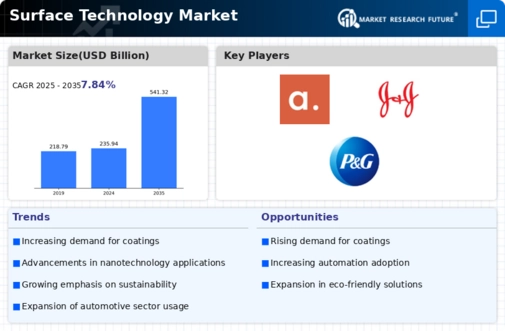Market Share
Surface Technology Market Share Analysis
Market share positioning strategies are crucial for companies operating in the Surface Technology Market, where competition is fierce and innovation drives success. In this dynamic industry, businesses employ various tactics to secure their position and gain a competitive edge.
One prevalent strategy is differentiation, where companies distinguish their offerings from competitors through unique features, superior quality, or innovative technology. By focusing on product differentiation, companies can attract customers seeking specific benefits or functionalities not available elsewhere. For example, a surface technology company might develop coatings with enhanced durability or environmental sustainability to set themselves apart from competitors.
Another key approach is market segmentation, wherein companies divide the market into distinct groups based on factors such as demographics, industry, or application. By identifying niche segments with specific needs or preferences, companies can tailor their products and marketing strategies to better address those requirements. For instance, a surface technology company might target the aerospace sector with specialized coatings designed to withstand extreme conditions, while simultaneously catering to the automotive industry with coatings optimized for corrosion resistance.
Additionally, strategic alliances and partnerships play a vital role in market share positioning. Collaborating with complementary businesses or forming strategic alliances with key stakeholders can provide access to new markets, technologies, or distribution channels. By leveraging the strengths of multiple partners, companies can enhance their competitive position and expand their reach more effectively. For example, a surface technology company might partner with a leading manufacturer to integrate their coatings into a popular product line, thereby increasing brand visibility and market penetration.
Furthermore, pricing strategies are essential for market share positioning in the Surface Technology Market. Companies must carefully balance pricing to remain competitive while maximizing profitability. This may involve offering competitive pricing to capture market share or implementing premium pricing for high-value products or services. Additionally, dynamic pricing strategies, such as discounts or promotional offers, can be employed to stimulate demand or respond to changes in market conditions.
All this has caused severe disruptions in production and trade restrictions, significantly affecting Surface technology demand into the market.
Innovation and research and development (R&D) efforts are also critical for maintaining market share in the Surface Technology Market. Companies must continuously invest in R&D to stay ahead of evolving customer needs and technological advancements. By developing new coatings, surface treatments, or application techniques, companies can differentiate themselves from competitors and capture market share in emerging sectors or applications. Moreover, investing in innovation helps future-proof businesses against competitive threats and positions them as industry leaders.
Furthermore, effective marketing and branding strategies are essential for market share positioning. Companies must build strong brand identities and communicate their value proposition effectively to target audiences. This may involve investing in advertising, digital marketing, or participation in industry events to raise awareness and generate demand for their products or services. By cultivating a positive brand image and fostering customer loyalty, companies can strengthen their market position and defend against competitors' encroachment.
Lastly, customer-centricity is paramount in market share positioning strategies. Companies must prioritize customer satisfaction and strive to exceed expectations in terms of product quality, service, and support. By listening to customer feedback, addressing pain points, and continuously improving their offerings, companies can build lasting relationships and cultivate a loyal customer base. This not only helps retain existing customers but also attracts new ones through positive word-of-mouth and referrals.






Leave a Comment